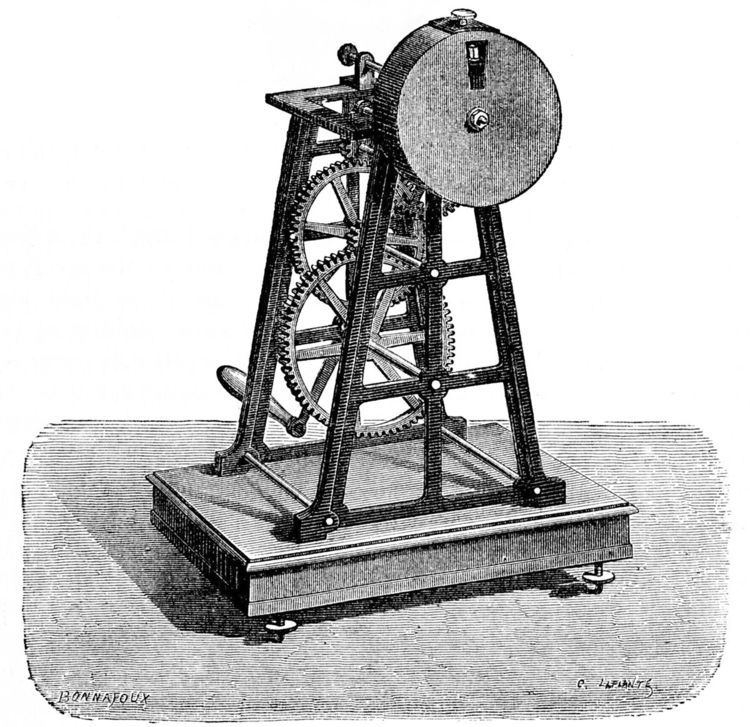 | ||
A phosphoroscope is piece of experimental equipment devised in 1857 by physicist A. E. Becquerel to measure how long it takes a phosphorescent material to stop glowing after it has been excited.
It consists of two rotating disks with holes in them. The holes are placed on each disk at equal angled radial lines and a given distance from the centre but they do not align with each other. A sample of phosphorescent material is placed in between the two disks. Light coming in through a hole in one of the discs excites the phosphorescent material which then emits light for a short amount of time. The disks are then rotated and by changing their speed the length of time the material glows can be determined.
References
Phosphoroscope Wikipedia(Text) CC BY-SA
